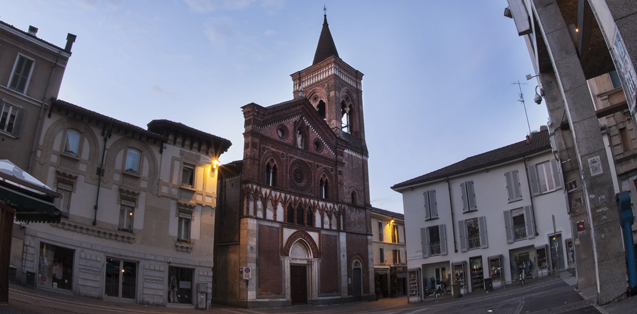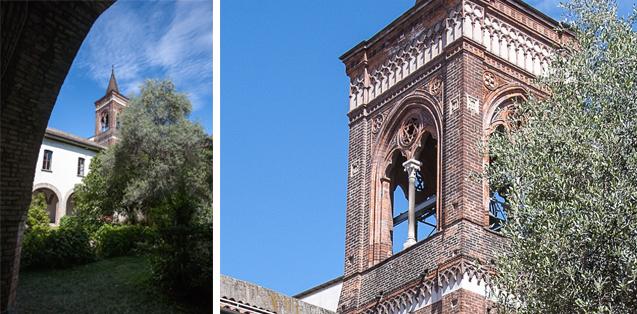The building of the church, whose name recalls the important Strata (paved street) connecting Monza to Milan, was promoted by a community of Franciscan Tertiaries between the year 1348 and 1368 following the project of Ambrogiolo da Milano. Transferred in 1393 to the Augustinian friars of the Milanese monastery of San Marco, it was internally transformed using late Baroque style decorations starting from 1756.
The façade, with a fake loggia and terracotta ornamentation, is one of the most beautiful in the Lombard Gothic style and was restored in 1870; the original stone statue representing the Madonna and Child, connected with the Augustinian cult of the Virgin Mary’s girdle and sculpted by an anonymous Lombard artist in the 15th century, is actually displayed in the Museum and Treasury of the Duomo and replaced in the niche by a copy.
THE CLOISTER
This part of Monza, in connection with the ancient road to Milan, in the 14th century was the privileged settlement for hospitals and monasteries, among which the Augustinian complex of Santa Maria in Strada.
Small-sized, the convent is a typical example of the architectural schemes adopted by the Mendicant Orders: four blocks enclosing the recently restored cloister, centre of the religious monastic life. Each body of the building had different functions, following a rule: one side is entirely occupied by the church that overlooks onto the road; the perpendicular side hosted the collective spaces such as the chapter house and the refectory; the other sides were used as workplaces and housing.



